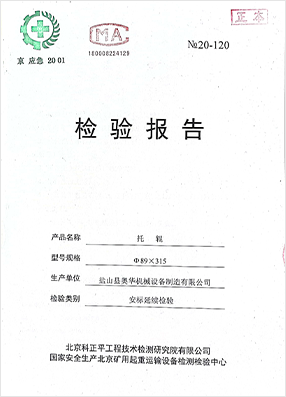 Afrikaans
Afrikaans  Albanian
Albanian  Amharic
Amharic  Arabic
Arabic  Armenian
Armenian  Azerbaijani
Azerbaijani  Basque
Basque  Belarusian
Belarusian  Bengali
Bengali  Bosnian
Bosnian  Bulgarian
Bulgarian  Catalan
Catalan  Cebuano
Cebuano  Corsican
Corsican  Croatian
Croatian  Czech
Czech  Danish
Danish  Dutch
Dutch  English
English  Esperanto
Esperanto  Estonian
Estonian  Finnish
Finnish  French
French  Frisian
Frisian  Galician
Galician  Georgian
Georgian  German
German  Greek
Greek  Gujarati
Gujarati  Haitian Creole
Haitian Creole  hausa
hausa  hawaiian
hawaiian  Hebrew
Hebrew  Hindi
Hindi  Miao
Miao  Hungarian
Hungarian  Icelandic
Icelandic  igbo
igbo  Indonesian
Indonesian  irish
irish  Italian
Italian  Japanese
Japanese  Javanese
Javanese  Kannada
Kannada  kazakh
kazakh  Khmer
Khmer  Rwandese
Rwandese  Korean
Korean  Kurdish
Kurdish  Kyrgyz
Kyrgyz  Lao
Lao  Latin
Latin  Latvian
Latvian  Lithuanian
Lithuanian  Luxembourgish
Luxembourgish  Macedonian
Macedonian  Malgashi
Malgashi  Malay
Malay  Malayalam
Malayalam  Maltese
Maltese  Maori
Maori  Marathi
Marathi  Mongolian
Mongolian  Myanmar
Myanmar  Nepali
Nepali  Norwegian
Norwegian  Norwegian
Norwegian  Occitan
Occitan  Pashto
Pashto  Persian
Persian  Polish
Polish  Portuguese
Portuguese  Punjabi
Punjabi  Romanian
Romanian  Russian
Russian  Samoan
Samoan  Scottish Gaelic
Scottish Gaelic  Serbian
Serbian  Sesotho
Sesotho  Shona
Shona  Sindhi
Sindhi  Sinhala
Sinhala  Slovak
Slovak  Slovenian
Slovenian  Somali
Somali  Spanish
Spanish  Sundanese
Sundanese  Swahili
Swahili  Swedish
Swedish  Tagalog
Tagalog  Tajik
Tajik  Tamil
Tamil  Tatar
Tatar  Telugu
Telugu  Thai
Thai  Turkish
Turkish  Turkmen
Turkmen  Ukrainian
Ukrainian  Urdu
Urdu  Uighur
Uighur  Uzbek
Uzbek  Vietnamese
Vietnamese  Welsh
Welsh  Bantu
Bantu  Yiddish
Yiddish  Yoruba
Yoruba  Zulu
Zulu Exploring the Advantages of Return Pulleys in Mechanical Systems
Understanding Return Pulley Systems
In various fields, especially in mechanical engineering and conveyor system design, the term return pulley refers to a crucial component that significantly enhances the efficiency and reliability of material handling systems. This article delves into the role, types, and benefits of return pulleys in industrial applications, offering insights into their functionality and importance.
What is a Return Pulley?
A return pulley is a type of pulley used in conveyor systems and cable-driven machinery. Its primary function is to guide the return path of a belt or cable, ensuring it returns smoothly after passing over the load-bearing section. By redirecting the path of the conveyor belt or cable, return pulleys play a vital role in maintaining the system's overall operational effectiveness.
Types of Return Pulleys
Return pulleys come in various types, each designed for specific applications
1. Flat Return Pulleys These are the most common type found in belt conveyor systems. They provide a smooth surface for the return belt to glide over, minimizing friction and wear.
2. Bend Return Pulleys These pulleys are used when the conveyor belt needs to change direction significantly. They help in navigating corners or changes in elevation while stabilizing the conveyor's movement.
3. Self-Aligning Return Pulleys Designed to accommodate misalignment, these pulleys help keep the belt centered on its path. They are especially useful in environments where load conditions or ambient conditions might cause the belt to drift off course.
return pulley

Benefits of Using Return Pulleys
Integrating return pulleys into a conveyance system can provide numerous advantages
1. Enhanced Durability By ensuring the proper alignment and tension of the conveyor belt, return pulleys extend the lifespan of the entire system. They help minimize wear and tear, reducing the frequency of replacements and maintenance costs.
2. Improved Efficiency Return pulleys facilitate the smooth movement of the conveyor belt, leading to more efficient material handling. This efficiency is crucial in industrial settings where time and productivity are of the essence.
3. Reduced Friction With a well-designed return pulley, the friction between the belt and its components is minimized. Lower friction means less energy is required to operate the conveyor, leading to energy savings.
4. Versatility Return pulleys can be adapted for numerous applications across different industries, including mining, food processing, and manufacturing. Their versatility allows them to be customized for specific material types and transportation needs.
5. Safety Properly functioning return pulleys contribute to the overall safety of material handling operations. By preventing the belt from slipping or derailing, they reduce the risk of accidents and injuries in the workplace.
Conclusion
Return pulleys are indispensable components of modern conveyor systems, providing essential support that enhances their functionality and reliability. By understanding the different types of return pulleys and their benefits, businesses can optimize their material handling processes. Investing in high-quality return pulleys not only boosts operational efficiency but also contributes to a safer and more productive workplace. As industries continue to evolve, the significance of effective conveyor system design, including the strategic use of return pulleys, will only grow, underscoring the importance of this often-overlooked component.
-
Revolutionizing Conveyor Reliability with Advanced Rubber Lagging PulleysNewsJul.22,2025
-
Powering Precision and Durability with Expert Manufacturers of Conveyor ComponentsNewsJul.22,2025
-
Optimizing Conveyor Systems with Advanced Conveyor AccessoriesNewsJul.22,2025
-
Maximize Conveyor Efficiency with Quality Conveyor Idler PulleysNewsJul.22,2025
-
Future-Proof Your Conveyor System with High-Performance Polyurethane RollerNewsJul.22,2025
-
Driving Efficiency Forward with Quality Idlers and RollersNewsJul.22,2025





























